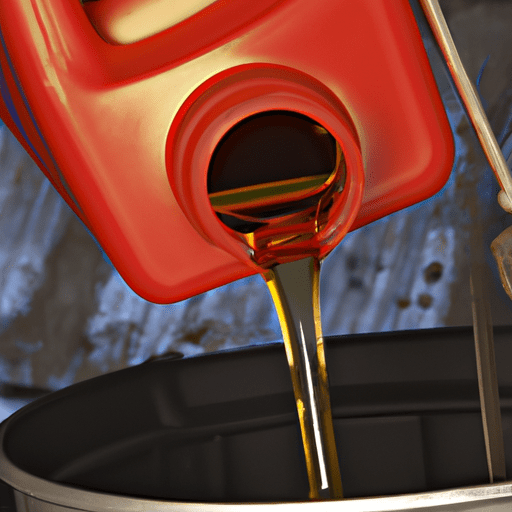Motorcarspecs.com delivers automobile industry news, and its unique content can entice viewers from all over the world. Every day, the Motorcarspecs.com team assists thousands of consumers in conducting vehicle research and comparing pricing on a wide range of automotive products and services. We’ve been pioneering innovative ways for prospective buyers to engage with automobiles and obtain timely and accurate information since January 2020. We created this platform for you, the viewers, to provide an honest evaluation on a relevant automobile, which we will completely review and post on our site.
Changing Car Oil: What You Need to Know
Taking the time to change your car oil regularly is one of the most important things you can do to keep you vehicle running smoothly. Indeed, motor oil acts as a lubricator for your car’s engine and helps it to run optimally for as long as possible. Here’s what you need to know about changing your car oil:
When to Change It
Experts recommend changing your car oil every 3–5 months, or every 6,000 to 8,000 miles. However, if you primarily drive short distances, or if you mainly drive on dirt roads or in very cold or hot climates, you might need to change your oil more frequently.
It’s always best to consult your car’s manual to check the suggested oil-change interval and what type of oil is recommended.
What You Need
In order to successfully change your car oil, you will need:
- Car jack – this is used lift your car up in the air.
- Oil filter – make sure you get one compatible with your car make and model.
- Oil – again, make sure it is compatible with your car.
- Oil pan – get one that’s large enough to hold all the oil.
- Socket wrench – this is used to remove the oil filter.
- Funnel – this is used to pour the oil in.
How to Do It
Once you have all the necessary equipment, you’re ready to begin the process. Here’s a step-by-step of how to change your car oil:
- Use the car jack to lift your car up in the air.
- Remove the oil’s drain plug and let the oil drain out into a pan.
- Take the old oil filter off and replace it with the new one.
- Pour the new oil into the engine. Use the funnel to help you pour the oil into the engine.
- Replace the drain plug.
- Lower your car back down on the ground.
- Check the dipstick and add more oil if necessary.
Changing car oil is an important part of keeping your car running well. Make sure to follow the manufacturer’s recommendations and to use the right supplies and tools to give yourself the best chance of success.
How often should I change my car’s oil?
Most automakers recommend changing the oil in your car every 3,000 to 5,000 miles. However, consult your vehicle’s owner’s manual or dealership service center for the manufacturer’s recommended oil change interval. Conditions such as severe weather, frequent stop and go driving, and long stretches of highway driving can affect how often you should change your oil.
How often should I check my car’s oil level?
Most automotive experts recommend checking your car’s oil level every 3,000-5,000 miles, or at least once a month. Checking the oil regularly helps ensure your engine remains lubricated and in top condition.
How do I check my car’s oil level?
To check your car’s oil level, start by parking your vehicle on a level surface and turning off the ignition. Pop your hood and remove the dipstick from the engine. Wipe off the oil with a rag, and then re-insert the dipstick fully into the engine. Remove it again, and the oil level should be clear. Use the markers on the dipstick to check the oil level. If the level is below the “Add” marker, you will need to add more oil.
What type of oil should I use to top up my car’s oil level?
The type of oil you should use depends on the model and make of your car. Your vehicle’s manual should provide suggested oil specification information. However, in most cases you should use a high-quality motor oil of the correct viscosity grade. If you’re unsure, your local dealership or service center can likely provide you with the correct type and viscosity grade of oil for your car.
When it comes to the regular maintenance of your car, the most important thing you must do is check and change the oil. Your car’s engine needs this thin liquid to lubricate and cool its parts. Without it, your car can suffer from severe damage and decrease its overall performance. Thankfully, changing oil is easy and costs little compared to other car repairs.
The first thing to do is ensure you have the right oil for your engine. The label of oil found on the cap of your engine will tell you the best type. Grab a few containers of oil-be sure to check with your local auto shop for the right weight – as well as a new oil filter.
Next, you will want to ensure you have a jack and jack stands to safely support the car while you are working on it. Once they are in place, you can go ahead and loosen the oil filler cap, which will help the oil drain out quicker. With a wrench, loosen the oil drain plug and wait for the old oil to drain out. Then, replace the plug with a new rubber gasket or washer on the threads.
Now remove the old filter by loosening it with your wrench. Use a rag to clean the rod or bolt and the threads on the engine housing where the filter is mounted. Put the new filter on and tighten it with the wrench.
Finally, pour the new oil into the engine. Once you have poured the oil and replaced the filler cap, make sure to check the oil level with the dipstick. If it’s too low, add more oil. Once the level is where it needs to be, you can start the engine and do a few quick checks to make sure the oil is flowing properly.
Changing your car’s oil is a simple and affordable way to keep your engine running efficiently and get the most out of your vehicle for years to come. Knowing how to do it yourself can save you a few trips to the repair shop, as well as cost and time.
How do I write a business plan?””
What are the essential elements of a business plan?
Depending on your goals, a business plan should include the following elements:
1. Executive Summary – Overview of the business, goals and objectives.
2. Market Analysis – Overview of your target market, competitors and industry trends.
3. Organization & Management – Describes how the company is organized, key team members, and management structure.
4. Products & Services – What you offer to your customers, including details such as pricing and availability.
5. Marketing & Sales – Outlines your strategies for generating customers and selling your product/services.
6. Financials & Projections – Your financial strategies, funding sources, and forecasts of profits and losses.
7. Appendix – Contains additional information such as resumes, licenses, and contracts.
In addition, be sure to check with your local Small Business Association for resources on how to write a business plan, as well as any regulatory requirements specific to your industry and local area.
Creating a comprehensive business plan is a crucial step in setting up your business for success.
The plan should include all of the essentials listed above, and be tailored according to your unique industry and product or service offering. Taking the time to craft your business plan, along with research and thoughtful consideration, will help create a roadmap for success.
How does a computer virus work?”
Q. What are the symptoms of a computer virus?
A. Symptoms of a computer virus can vary depending on the type of virus, but common signs include unexpected system crashes, decreased performance or increased resource usage, corrupt data, or altered system settings. A virus can also affect the security of your computer by allowing unauthorized access, Trojans, ads, or pop-ups. Additionally, a virus may be able to access and replicate itself to different devices or systems on a network.


